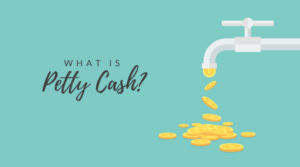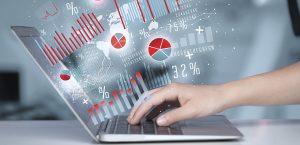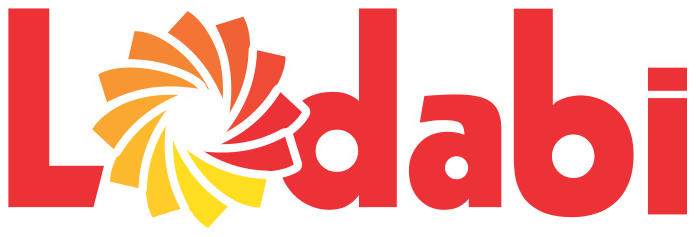Chưa có sản phẩm trong giỏ hàng.
Bookkeeping
Cost Accounting Defined: What It Is & Why It Matters

The national organization is the American Institute of Certified Public Accountants (AICPA). Both associations provide members with education, networking and leadership opportunities. Certified Cost Accountant
The Institute of Certified Cost and Management Accountants offers a Certified Cost Accountant (CCA) program for accountants specializing in cost accounting. This credential is designed to substantiate an accountant’s proficiency in cost accounting methods, technology and implementation. This in turn may provide management with guidance in the pricing of various services.

Companies that use life cycle costing are those that place an emphasis on long-term planning so that their accumulated profits over several years are maximized. All activities involved in production are divided based on their individual costs. The cost of each activity is then allocated according to their actual consumption of costs. To find the costs of these activities, ABC traces their impact on resource consumption and costing final outputs. Any activity that is relevant to the final cost of an object is seen as a cost driver for that object. This method of costing is when multiple units of the same item are produced simultaneously.
On the left, you’re getting a level of detail about the cost of goods sold that external parties would find superfluous. For example, it’s logical that a shoemaking business would include laces’ cost in its shoe cost calculation. It’s not as easy to understand how you add factory rent costs to a shoe’s cost. Cost accounting provides statistical data for the preparation of the budget and proper and efficient planning. Minimum pricing analysis delves into the lowest prices that can be charged, while still earning a profit.
Cost accounting is an internal process used only by a company to identify ways to reduce spending. QuickBooks is one of the most popular accounting software programs on the market and while it is one of the best options, it’s not necessarily the best for every business. For example, while QuickBooks is very robust, it may involve a steeper learning curve and come at a higher cost than competitors–especially for businesses that want to use its payroll features. Cost accounting can give your business detailed insight into how your money is being spent. With this information, you can better budget for the future, reduce inefficiencies and increase profitability.
Automate Cost Accounting with Online Software
Due to inflation, the historical cost of an asset will not necessarily be accurate at a later point in time. With the help of marginal cost accounting, a manager can decide whether getting new equipment or hiring more workers to meet extra demand is a smart decision in the short term. Unlike other costing methods which analyze the profitability of an investment on a period basis, life cycle costing traces cost and revenues over several periods.
Overhead costs like rent, utility bills, and fixed costs like machinery are examples of indirect costs. No matter your industry, cost accounting is essential for your internal team. It will help you record and analyze the costs of products in services so that you can operate smoothly and grow your business.
Ascertainment of cost
Instead, most companies save time and money by automating their finances through online, cloud accounting software. To illustrate how this method works, let’s take a pharmaceutical company that produces two types of medicine. Medicine A is produced at a high volume through a mostly automated process that only consists of putting chemicals into processing equipment and waiting for the final product. Controllable costs are expenses managers have control over and have the power to increase or decrease. Controllable costs are considered when the decision of taking on the cost is made by one individual.
Some of these costs are not necessarily avoidable though, and the level of commitment to them can decide the success of the business. Examples include advertising costs, employee bonuses, and office supplies. Companies looking to expand their product line need to understand their cost structure.
Throughput accounting focuses on working around these limitations and is more focused on sustaining workflow than cutting costs. Once throughput is maximized, input and output will flow in the best possible way, allowing companies to reach revenue maximization. This will not only reduce inventory holding costs but will also minimize downtime from having no storage space thereby preventing opportunity cost in terms of cash blocked in inventory. Determining costing variance allows a manager to pinpoint the particular areas where there are cost differences and the reasons for the differences.
Expenses/overhead
how to prepare for tax season keeps track of money spent on labor, maintenance, raw material, and supplies, among others, and then analyzes these costs to find ways to decrease or utilize them. For example, a company decides to buy a new piece of manufacturing equipment rather than lease it. Martin loves entrepreneurship and has helped dozens of entrepreneurs by validating the business idea, finding scalable customer acquisition channels, and building a data-driven organization. During his time working in investment banking, tech startups, and industry-leading companies he gained extensive knowledge in using different software tools to optimize business processes. Companies who use throughput accounting use it as a reflection of their operating realities. The reality is that maximum production capacity cannot be maintained throughout the life cycle of the company — machinery will undergo maintenance and employees will go on vacation.
German supermarket pilots price spikes to reflect the “true … – Food Ingredients First
German supermarket pilots price spikes to reflect the “true ….
Posted: Tue, 01 Aug 2023 09:32:56 GMT [source]
You can calculate the batch’s direct labor costs by looking at how many hours your employees spent converting the potatoes to chips. Multiply the number of hours spent per batch by the employees’ hourly pay. If each batch requires two hours of labor at $50 per hour, direct labor costs $100 per batch (2 hours of labor ✕ $50 per hour). Cost Accounting provides statistical data for analysis and interpretation of cost in production.
Definition of Cost Accounting
Thus, in the above income statement, the variable costs are 60% (100% – 40%) of sales, or $648,000 ($1,080,000 X 60%). The total contribution margin $432,000, can also be computed directly by multiplying the sales by the contribution margin ratio ($1,080,000 X 40%). If the variance analysis determines that actual costs are higher than expected, the variance is unfavorable.
- Break-even point analysis is an important tool for price determination on products and services.
- In contrast, long-term production activities usually require companies to also include indirect costs like overhead.
- There is a decline in business, so management is looking for ways to prudently cut costs while retaining the basic functionality of the organization.
Activity-based costing (ABC) is a cost accounting technique used to ascertain the cost of activities involved in the production of an item. Under this method, costing accountants try to allocate overhead and indirect costs that are not included in standard costing. None of these tools are used by financial accountants, who are more concerned with the production of financial statements. Cost accounting is a process of recording, analyzing and reporting all of a company’s costs (both variable and fixed) related to the production of a product.
But if the company operates under historical accounting principles, the property will still be recorded as $50,000 on the balance sheet. Due to this discrepancy, some companies use a mark-to-market basis to record assets in their financial statements. However, historical cost accounting is only favorable in the short term where costs are not widely different.
Activity-based costing (ABC) better identifies product costing in the long run, but may not be too helpful in day-to-day decision-making. Overheads are costs that relate to ongoing business expenses that are not directly attributed to creating products or services. Office staff, utilities, the maintenance and repair of equipment, supplies, payroll taxes, depreciation of machinery, rent and mortgage payments and sales staff are all considered overhead costs.
What Is the Difference Between Cost Accounting and Financial Accounting?
It helps in proper and efficient planning and also helps in the preparation of the budget. Variance analysis is the ongoing comparison of actual to budgeted revenues and expenses, as well as investigations to discern the causes of those variances. The intent is to provide management with actionable information about variances. Throughput analysis focuses on bottleneck operations, to see if their usage is being maximized.
If it determines the actual costs are lower than expected, the variance is favorable. Job costing records direct labor and direct material costs by individual order. When your goods and services are easily discernible, you’ll use a job costing system. CPAs are commonly supporting by two primary organizations, one at the national level and another at the state.
